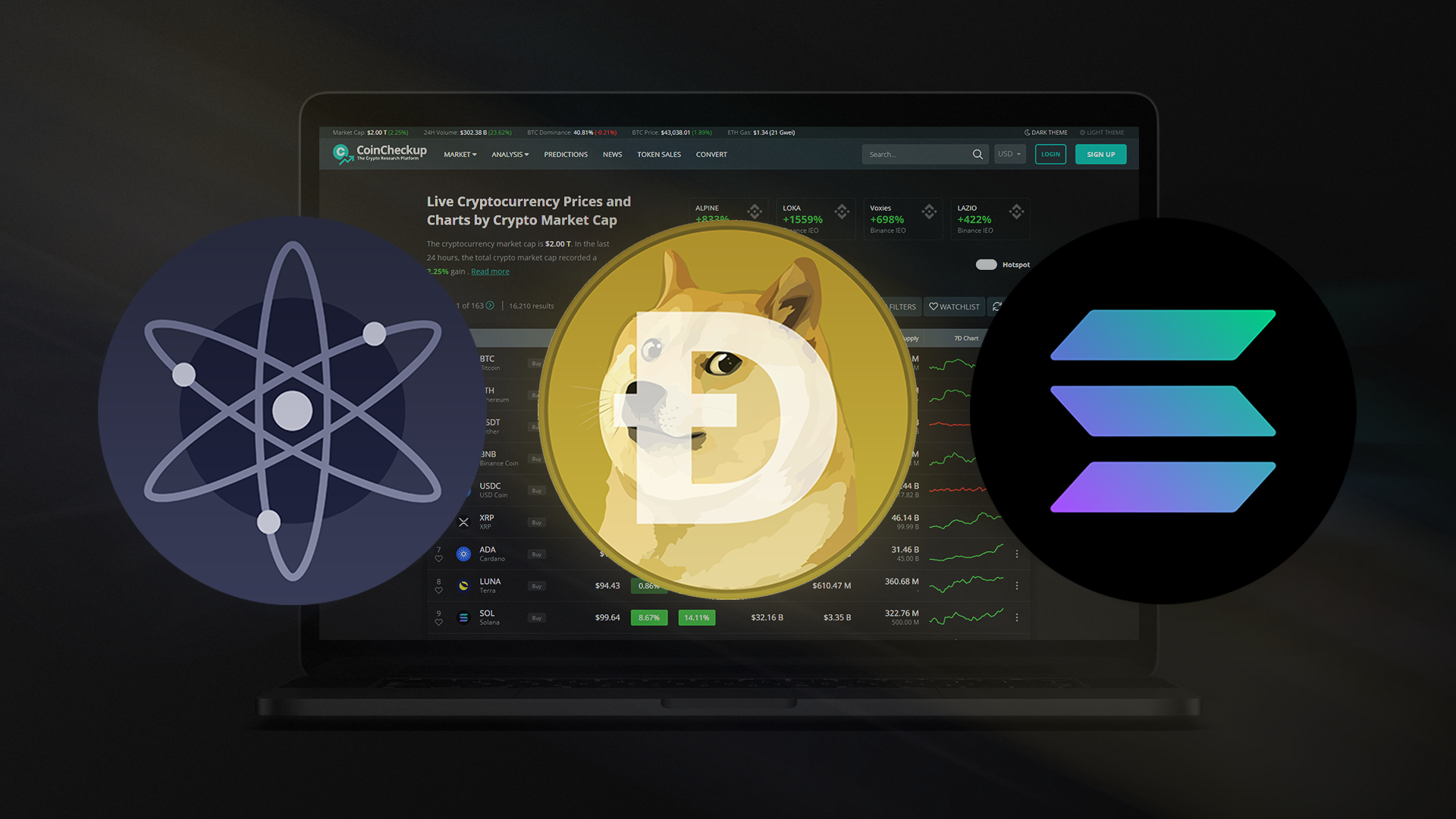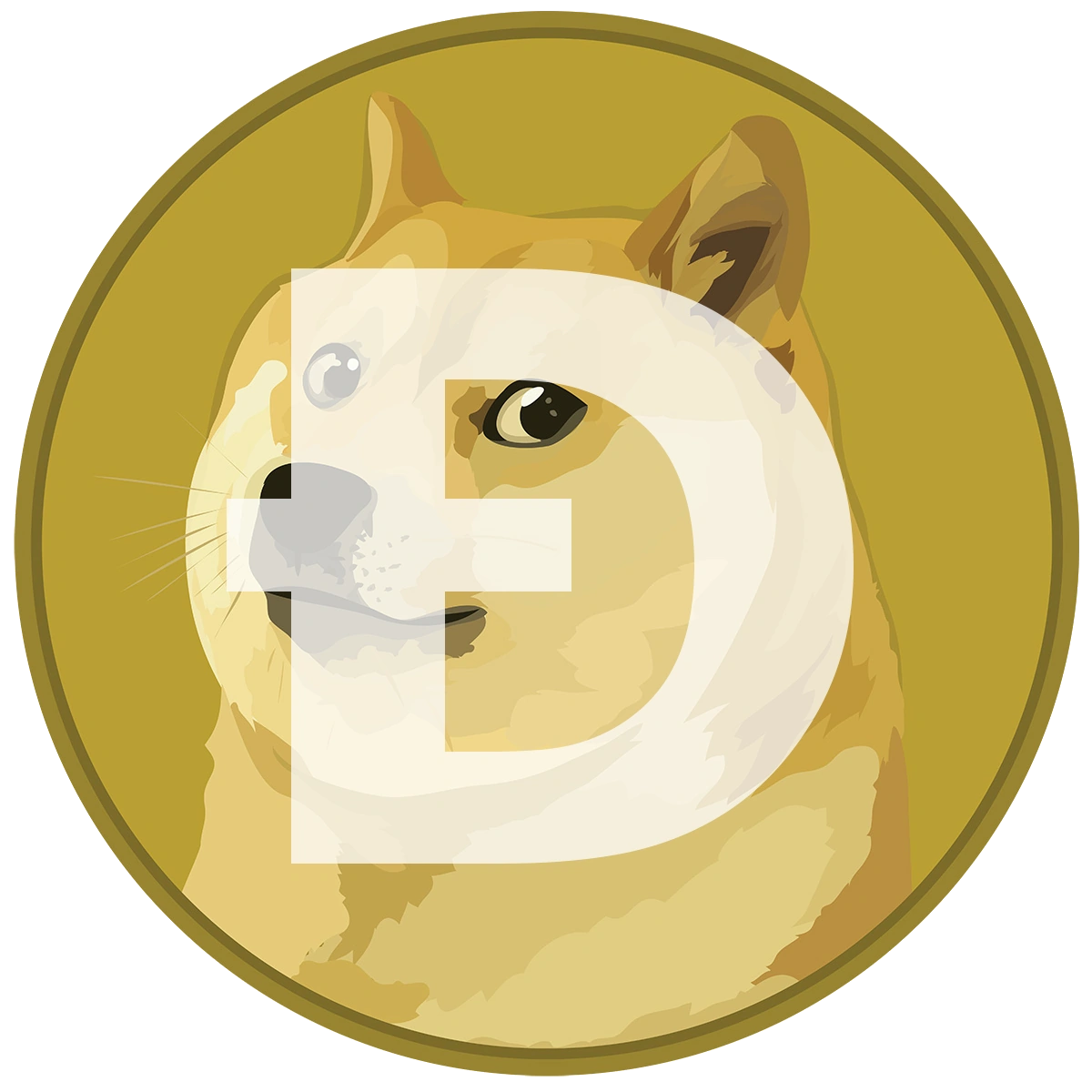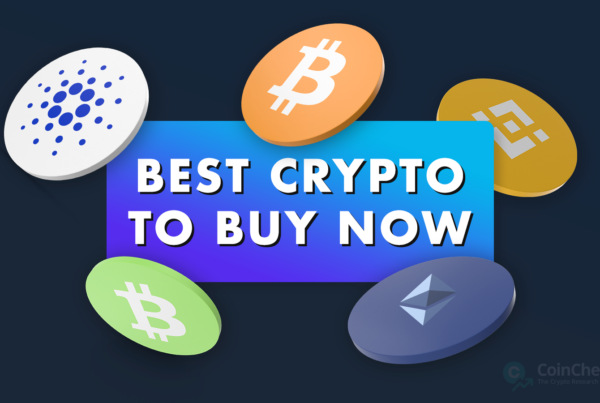
The cryptocurrency sector started 2023 on a positive note as its total market capitalization grew from $820 billion to over $848 billion during Week 1. While this only accounts for a bit more than a 3% increase, the reversal of the lasting slightly bearish trend is what we are the happiest to finally see. In addition, many blockchain projects are entering the new year with a large developmental momentum and several important updates are expected to be deployed to various top blockchains in Q1 2023. It really seems like a glimmer of optimism has finally shone on the cryptocurrency community at the beginning of 2023.

3. Cosmos (ATOM)
Cosmos is a network of blockchains that facilitates the interoperability between otherwise incompatible blockchain environments. Cosmos’ Inter-Blockchain Communication (IBC) protocol currently supports already 49 different blockchains. The Cosmos network consists of two layers – the Tendermint BFT (Byzantine Fault Tolerant), which combines the networking and consensus layers, and the application layer. In the application layer, developers can utilize the Cosmos Software Developer Kit (SDK) to translate the code from popular programming languages into one that is readable by the Cosmos protocol. The project’s success is best reflected by the rapid growth of the Cosmos network, which in less than four years grew from a small ICO into a thriving ecosystem.
A set of security enhancements and governance improvements to be deployed to Cosmos in Q1 2023, new project roadmap reveals
The Cosmos team recently published an update to the project roadmap, which revealed that Cosmos users may expect two major upgrades, namely the v8-Rho Upgrade and v9-Lambda Upgrade, in Q1 2023. While the Rho Upgrade will focus on improving interchain security by introducing an obligatory participation of provider chain validators, the Lambda upgrade will bring most changes to the Governance module and the Interchain Account Message Authorization module. In December 2022, the Cosmos project was commended for being one of the top blockchain projects by lead Ethereum developer Vitalik Buterin himself.
In addition, Cosmos has a high number of active developers and has even claimed the title of the second most actively developed project, trailing only Polkadot in 2022. Should this strive for continued developmental be recognized by users and other developers, which seem likely, this could provide a big boost to the Cosmos network’s activity as well as ATOM’s price.

2. Dogecoin (DOGE)
Dogecoin launched in December 2013 as a joke born out of the Shiba Inu doge meme that went viral that same year. Despite its meme-inspired beginnings, the community quickly took a liking to the slightly inflationary digital currency boasting far lower transactions costs and throughput than some of the leading crypto networks, such as Bitcoin and Ethereum. In the 12 months between May 2020 and May 2021, the DOGE token had gone on a historic bull run that saw its price increase by more than 30,000%. The rally was driven mostly by Tesla CEO Elon Musk’s publicly shared bullish stance on the memecoin and subsequent exposure the token received from a broader audience of regular investors. Today, Dogecoin’s use cases expend far beyond just tipping and performing similar micro-transactions, as the world’s largest memecoin is widely being used for larger payments as well as in DeFi apps.
5 million DOGE for Dogecoin Core development
The Dogecoin Foundation has recently announced it is allocating 5 million DOGE, worth around $360,000 at the time of writing, to a dedicated Dogecoin Core Development Fund or in short, the CoreFund. The fund is essentially a multi-signature wallet that has five custodians, who are members of the Dogecoin Foundation Board or acitve/former Dogecoin Core developers: chromatic, Marshall Hayner, Michi Lumin, Patrick Lodder and Ross Nicoll. The wallet, which can be found here, is set to require three out of five signatures to confirm transactions. With this allocation, the Dogecoin Foundation has secured funds for the development of Dogecoin Core protocol, which is critical and to the benefit of the whole Dogecoin ecosystem. It should also be mentioned that DOGE emerged as one of the most resilient cryptocurrencies in the bear market of 2022. Among the Top 10 cryptocurrencies, DOGE was the third-best performing asset, dropping by “only” 58% throughout last year, only staying behind XRP and BNB, which posted yearly losses of 57.2% and 53% respectively. Most notably, DOGE performed way better than its main competitor SHIBA INU (SHIB), which dropped by 76% in 2022. Can Dogecoin’s resiliency to depreciation in 2022 turn into a tendency for appreciation in 2023 though?

1. Solana (SOL)
Solana is a smart contract enabled blockchain platform developed with a focus on scalability. Due to its high throughput of 65,000 transactions per second and absurdly low transaction fees (an average transaction on the blockchain costs just $0.00025), Solana is considered one of the strongest Ethereum competitors. Such a high blockchain efficiency is made possible by utilizing an innovative proof-of-stake consensus mechanism combined with proof-of-history (PoH) timestamping mechanism. These reasons make Solana very popular among various non-fungible token (NFT) projects and decentralized finance applications of all kinds. Blockchain developers also appreciate that Solana is backed by major investors such as Polychain and Andreessen Horowitz, which provide Solana Labs more than sufficient funds for the future development of the Solana ecosystem.
Launch of BONK token on Solana sparks significant trading activity and investments
Following a disastrous 2022, during which SOL lost more than 93% of its value, Solana is on the upswing in the early days of 2023. Some believe that the coin might have found its bottom and is now heading for recovery. This kind of thinking became especially widespread after the lunch of BONK on Solana attracted a lot of attention as well as investors and drove the price of SOL up by more than 30% in a few days.
Bonk is a meme token modelled after Shiba Inu that launched on December 25 and peaked at $0.000005 after rallying by a few hundred percent. 50% of the BONK token’s supply was airdropped to Solana users and the airdropped tokens generated more than $20 million in trading volume according to data form the Solana decentralized exchange Orca. In addition, Solana network activity is surging because users are chasing high yield opportunities within the Solana ecosystem. While the surge may have been partly hype-driven SOL has managed to maintain the price of around $13 per token ever since. Furthermore, even several on-chain Solana metrics are recovering – the number of daily active Solana addresses, for example, is 3-times higher than it was in the pre-FTX collapse period. Do you also think that Solana trend is flipped and SOL is in for further growth?



